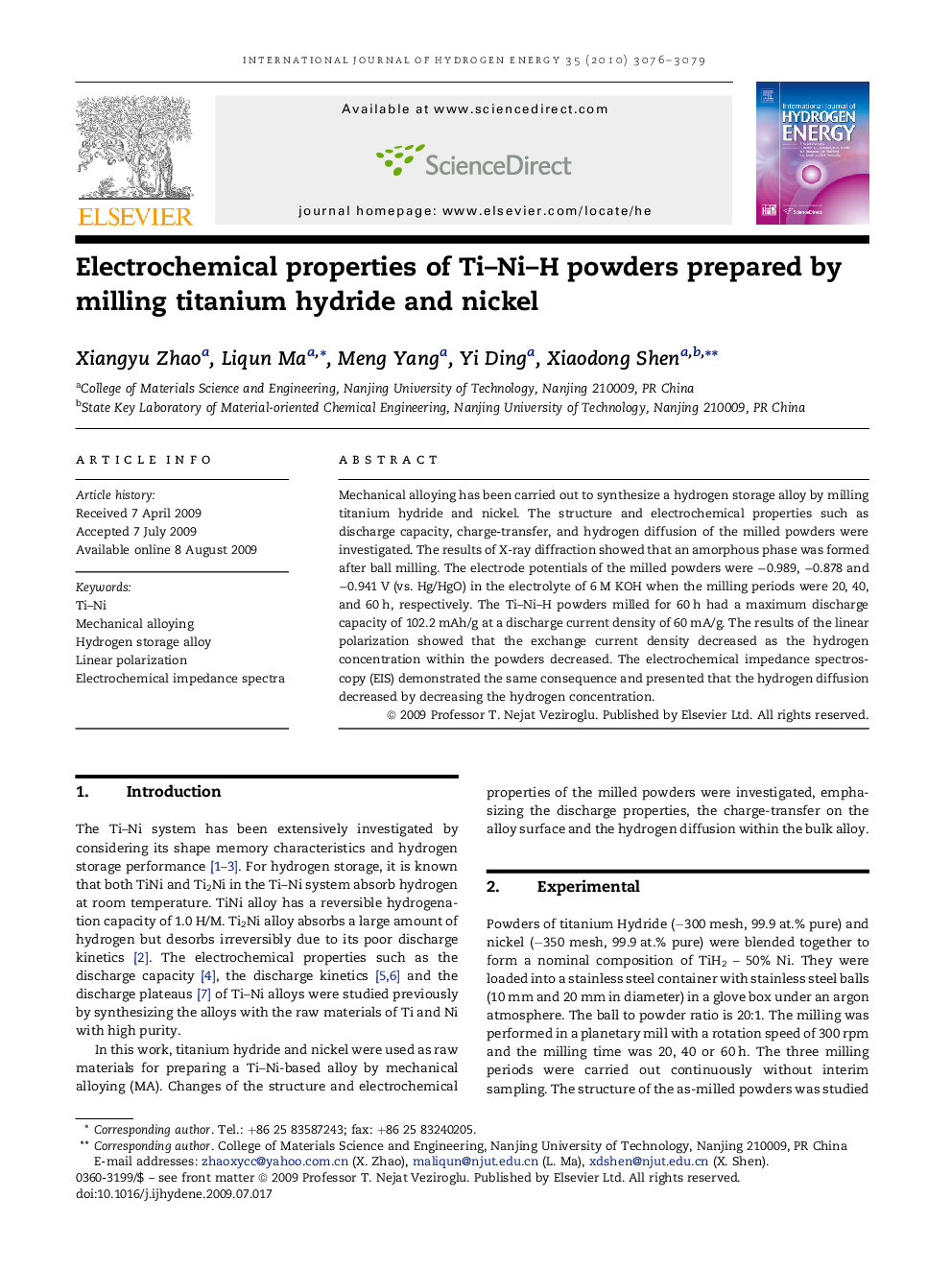| Article ID | Journal | Published Year | Pages | File Type |
|---|---|---|---|---|
| 1273307 | International Journal of Hydrogen Energy | 2010 | 4 Pages |
Mechanical alloying has been carried out to synthesize a hydrogen storage alloy by milling titanium hydride and nickel. The structure and electrochemical properties such as discharge capacity, charge-transfer, and hydrogen diffusion of the milled powders were investigated. The results of X-ray diffraction showed that an amorphous phase was formed after ball milling. The electrode potentials of the milled powders were −0.989, −0.878 and −0.941 V (vs. Hg/HgO) in the electrolyte of 6 M KOH when the milling periods were 20, 40, and 60 h, respectively. The Ti–Ni–H powders milled for 60 h had a maximum discharge capacity of 102.2 mAh/g at a discharge current density of 60 mA/g. The results of the linear polarization showed that the exchange current density decreased as the hydrogen concentration within the powders decreased. The electrochemical impedance spectroscopy (EIS) demonstrated the same consequence and presented that the hydrogen diffusion decreased by decreasing the hydrogen concentration.
